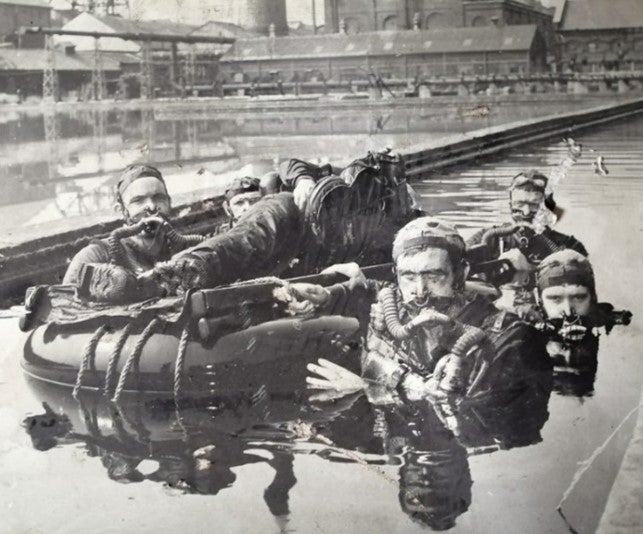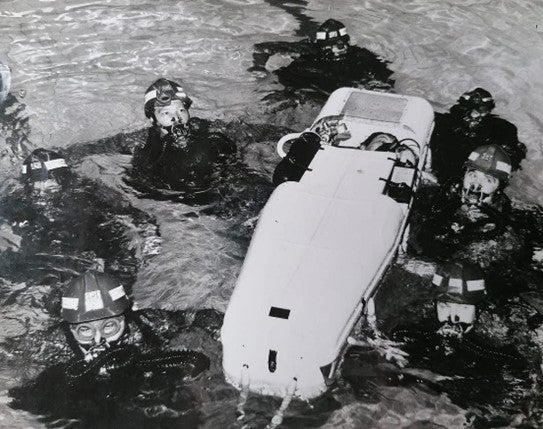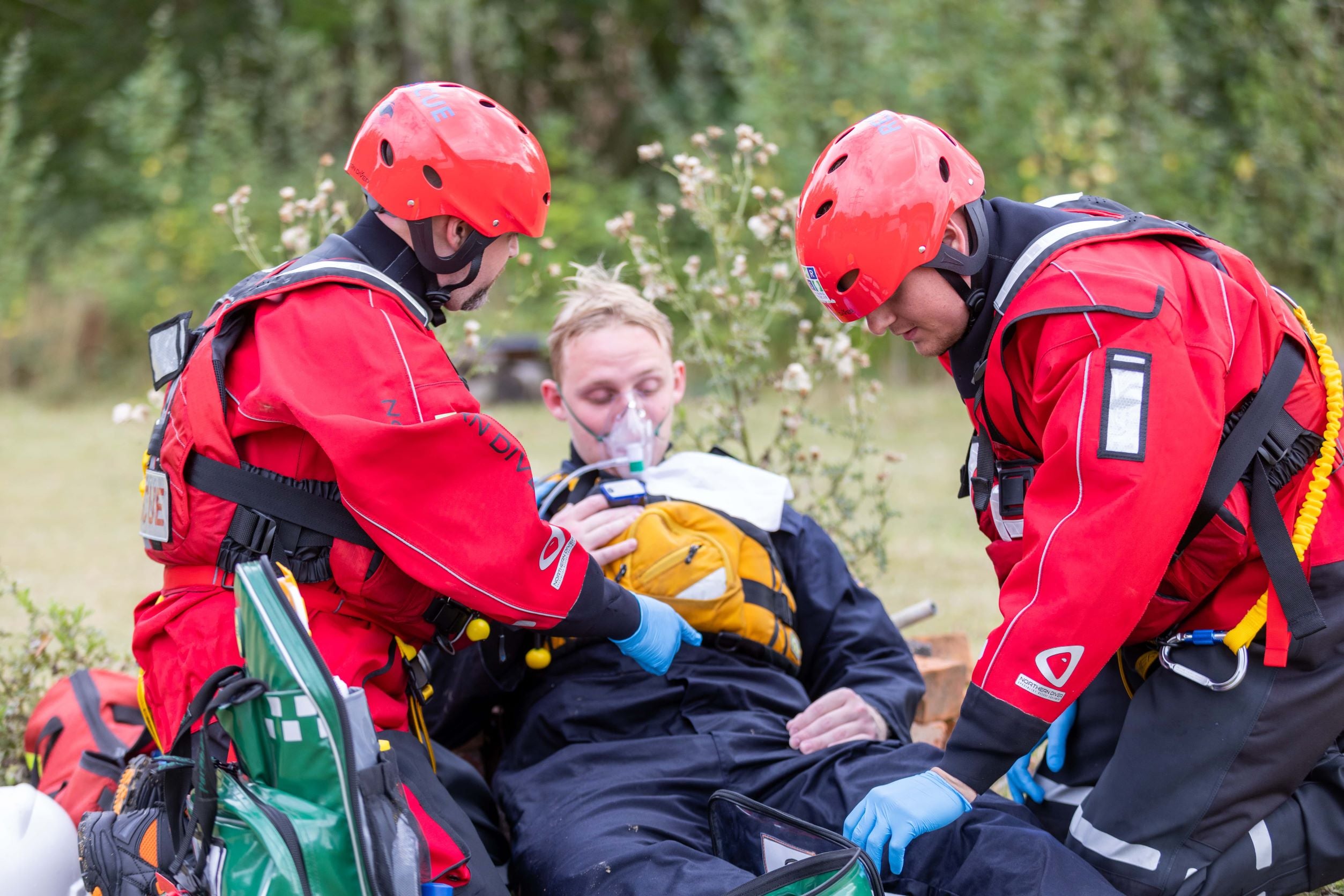MRS Training & Rescue has provided rescue services for over 120 years. In this article, we cover the historical water rescue services we provided to the mining industry and how that has evolved to the water rescue services we provide to the mining and other industrial environments today.
Our water rescue history
MRS Training & Rescue has been in operation since 1902 – and since our formation, have recognised the threats that come from powerful currents of water.
Water has the potential to cause:
- Ground collapse
- Drowning
- Flooding of surface areas
- Blocked walkways and tunnels
- Damage to communication equipment
- Ventilation failure
- Damage to environmental systems
In mining environments, water can come from a variety of sources – such as old mine workings, aquifers, rivers, and canals, to name a few. Water in a mine environment can be devastating, and therefore providing water rescue services has been a critical part of what we offer to clients for over 100 years.

The development of water rescue equipment
The development of water rescue equipment has played a crucial role in saving countless lives and improving rescue operations. From early wooden rafts and hand-powered pumps to advanced inflatable boats and state-of-the-art flotation devices, the development of water rescue equipment has undergone a remarkable transformation.
In early mines rescue operations, specialist breathing apparatus, such as the PROTO or later the ‘Selected Elevated Flow Apparatus’, fondly remembered as SEFA utilised mechanical parts in place of electronic components allowing for the short, shallow submersion in flooded areas.
Innovation often came from strange places, even adapting and re-purposing Hillman Imp car engines as pumps to maintain water levels in some mines.
The Lofthouse Colliery Disaster 1973
The Lofthouse Colliery Disaster, March 1973, proved to be a game changer. At around 2am an electrician heard a bang and saw water travelling towards him. This was the start of a terrible violent inrush of huge amounts of water that trapped seven miners underground. Only one body was recovered after a six-day rescue operation.
Following the Lofthouse Colliery Disaster – MRS Training & Rescue upskilled its capabilities, to include Self-Contained Underwater Breathing Apparatus (SCUBA), as seen in the picture above taken of our Mansfield Mines Rescue diving team, based in Nottinghamshire.
Recognising the need to extricate a casualty from a flooded environment, MRS Training & Rescue developed a purpose-built stretcher referred to as the ‘coffin’ to remove a person from water safely. The ‘coffin’ featured oxygen cylinders and a sliding cover with an observation window to protect casualties from the roof or falling debris.

The continual improvement of materials, design, and technology has made it possible for rescue teams to tackle even the most challenging of water rescue scenarios with confidence and efficiency. Today, the water rescue equipment available is lighter, more durable, and better suited to the demands of modern rescue operations.
Water rescue beyond mining
With the advent of the Confined Space Regulations 1997, employers were quickly required to plan for and manage special hazards that would frequently lead to ill health, injury, and loss of life. These five hazards are called ‘Specified Risks’ with one of them being ‘drowning from an increase in the level of liquid’.
MRS Training & Rescue teams risk assess and manage a range of Confined Space entries, such as reservoirs, culverts and drains some of which may still be live and flowing. Hazards can include, but are not limited to:
- Current
- Slippery surfaces
- Sharp objects
- Falls from height
- Biological and chemical contamination
- Inclement weather

Water rescue services today
Our team have built on our water rescue legacy with modern equipment and training up to DEFRA standard, blending existing industrial qualifications and experience to provide effective and safe support where required, including, but not limited to:
- Work at height
- Confined Spaces
- Pre-hospital care
- Casualty handling
- Resilience
- Training
- BOSIET/ MIST
MRS Training & Rescue teams have deployed abroad providing safety cover offshore and on dockside whilst vessels are being decommissioned, where enhanced water training, such as sea survival and helicopter preparedness, would be required.

What common physical water hazards can we come across today?
- Undercut – posing a threat to walkers and vehicles. Current destroys and undermines the bank with the potential to cause a collapse.
- Strainers – objects such as seating, fencing, tree branches allow water to pass through easily, but would trap a person with devastating consequences.
- Siphons – features, such as a parked car or boulders can allow water to flow underneath and around it dragging and trapping a person underneath.
- Drain covers – the upswell of water can cause them to lift and move. The open drain can have a vortex and syphon effect trapping and drowning a person who may fall in.
Notwithstanding sewage contamination, floating debris, and fixed structures, such as bridges then the threat levels increase dramatically.
Ensuring water safety with MRS Training & Rescue
MRS Training & Rescue can provide rescue and water rescue services throughout the UK and can adapt services to support a range of industrial environments. To ensure you are compliant and working safely in or around water, we can provide:
- Support teams working on or around water
- Environmental audit teams
- Civil emergency response teams (for gas, water, electricity, and telecommunications)
- Water rescue equipment hire
Speak to MRS Training & Rescue today to learn more about the water rescue services we can provide.




